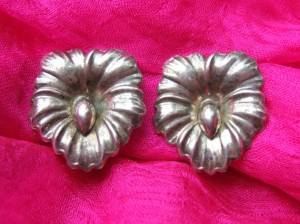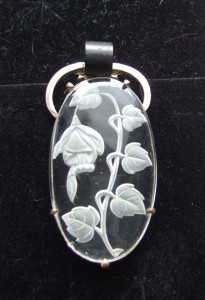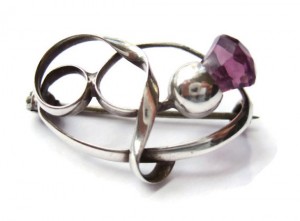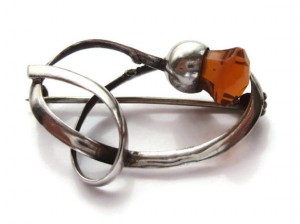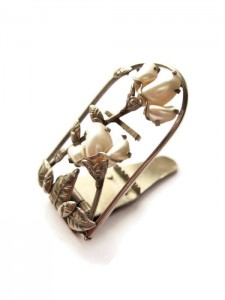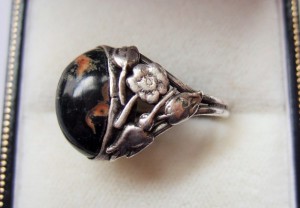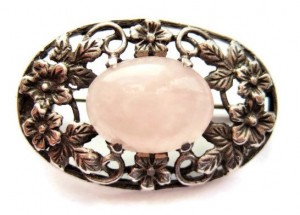Throughout the ages, people have adorned themselves. Jewellery might be a marker of status and/or wealth (think of a queen’s crown, or a mayor’s chain, or a rapper’s bling), but mostly it serves the simple purpose of beautification.
And where better to find inspiration than the beauty of nature? Flowers unsurprisingly provide a rich seam for jewellery makers.
When I was on my first archaeological excavation outside the UK, in north-eastern Greece, I was able to visit the archaeological museum at Thessaloniki. There I was wowed by the sumptuous golden wreaths or diadems made of gold oak leaves, or olive leaves—often with flowers and even golden bees attached. But the most striking of all for me was the wreath found in the Tomb of Philip II of Macedon (the father of Alexander the Great) at Vergina, dating from the late 4th century BC and composed of a mass of myrtle leaves and flowers.
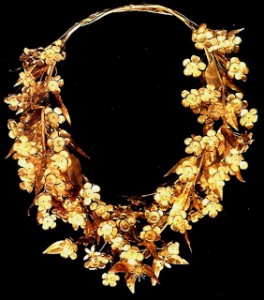
Wreath of gold myrtle leaves and flowers, found in the tomb of Philip II of Macedon at Vergina, Greece.
The Mughals in India were well-known for their showy jewellery, often on a floral theme:
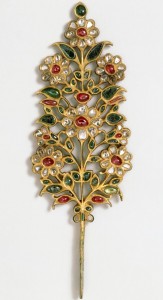
Turban ornament, India or Pakistan, early 18th century, set with rubies, emeralds, pale beryls and diamonds. Photo: V&A Museum.
Flower rings, in the form of baskets or giardinetti (‘little gardens’) were popular at around the same time in Europe (in the Georgian period in the UK):
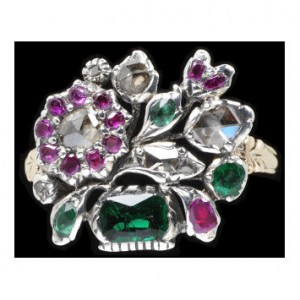
‘Giardinetti’ ring of gold and silver with rubies, emeralds and diamonds, English, 1730-1760. Photo: V&A Museum.
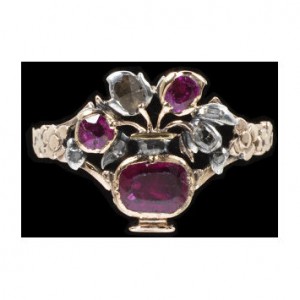
‘Giardinetti’ ring of gold and silver with rubies and diamonds, English, 1730-1760. Photo: V&A Museum.
Flowers were very popular with Arts and Crafts jewellers of the late 19th and early 20th centuries, who saw themselves as part of a ‘back to basics’ and ‘back to nature’ movement:
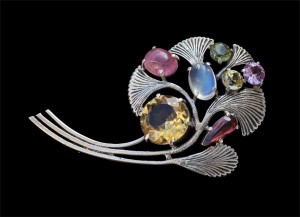
Papyrus bloom brooch by Edith Linnell, in silver, tourmaline, citrine and moonstone. Sold by Tadema Gallery.
The absolute master of floral jewellery was perhaps René Lalique (1860-1945).
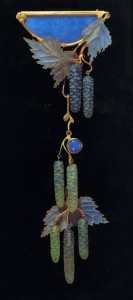
René Lalique corsage ornament in opal, enamel, glass and gold, with a willow catkins motif, c. 1904.
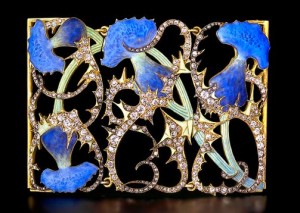
René Lalique plaque de cou with a thistle motif, in enamel and diamonds.
Unsurprisingly, in the light of the ubiquity of floral motifs in jewellery, I have some flower jewellery in my Etsy shop (not quite as grand as the examples above, but lovely nonetheless) …
I have pansies:
and fuchsias:
and thistles:
and lotuses:
and daisies:
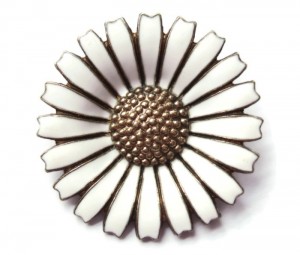
Anton Michelsen daisy brooch, one of four pieces of Danish daisy jewellery for sale at Inglenookery. (NOW SOLD).
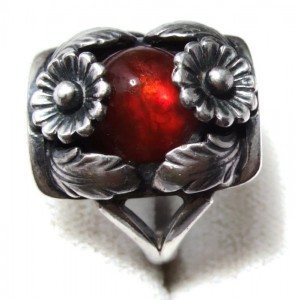
Baltic amber and sterling silver ring, by Niels Erik From of Denmark, adorned with a couple of daisy-like flowers. (NOW SOLD).
as well as other more generalised flowers:
and other pieces with foliage designs.
